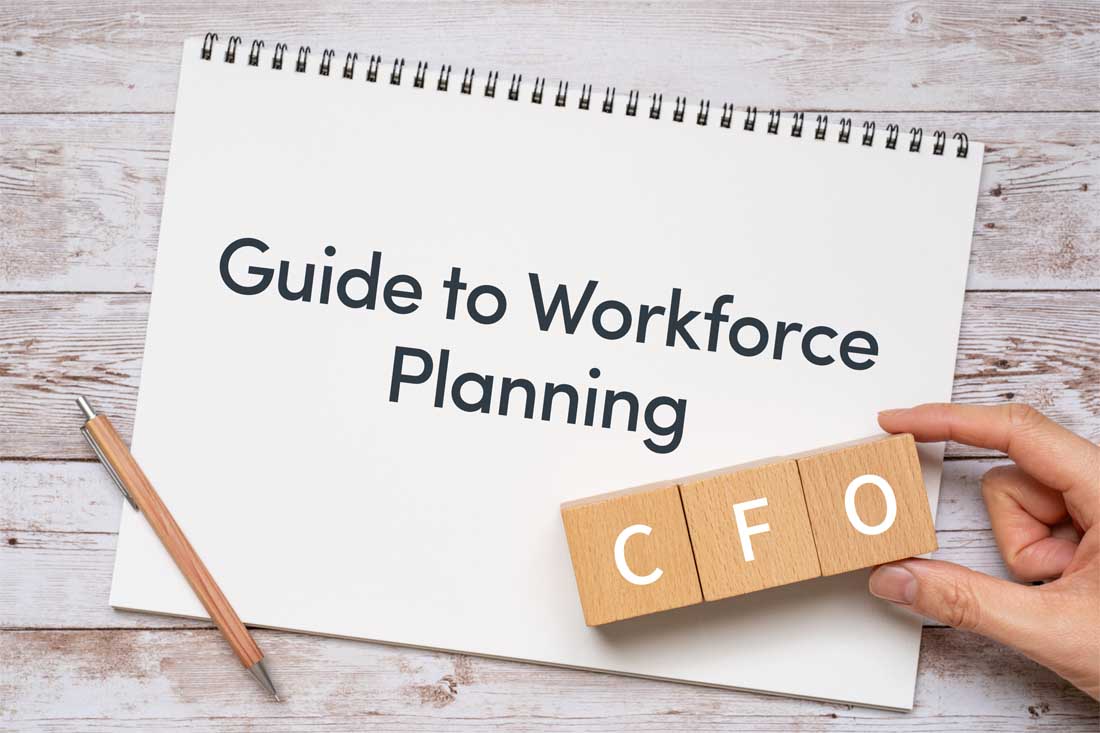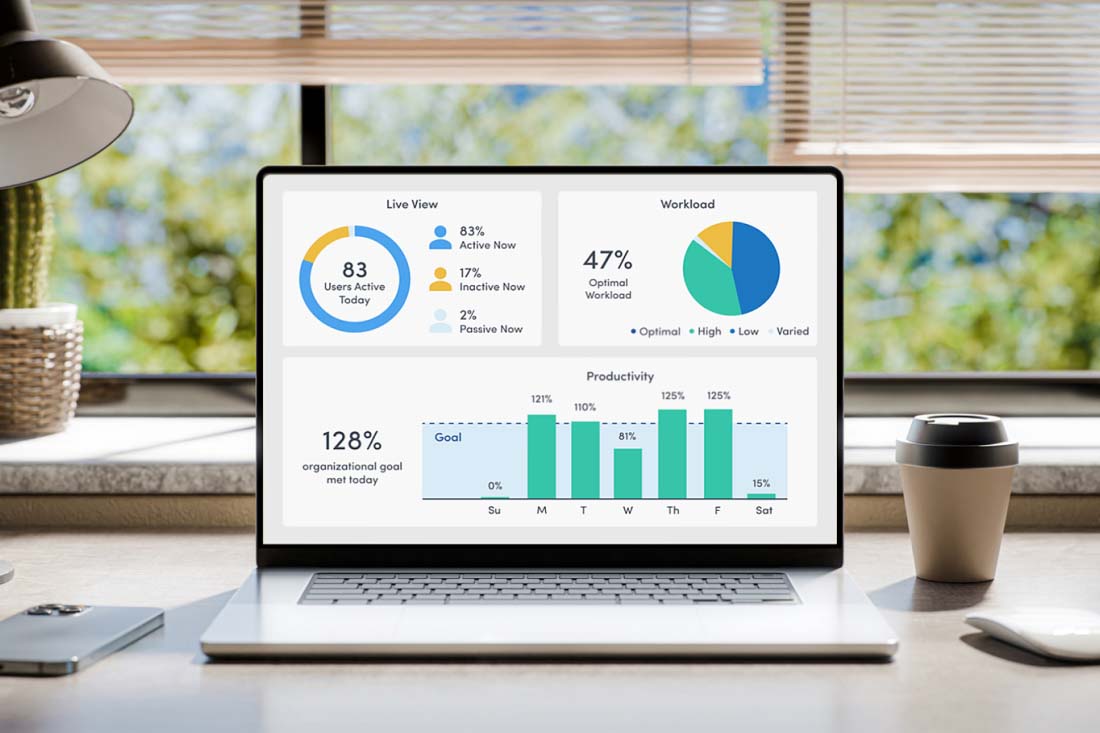Labor accounts for up to 70% of total business expenses, yet workforce efficiency remains a blind spot for many organizations. CFOs can access real-time financial metrics, cash flow data and budget forecasts instantly — but often lack visibility into how effectively their workforce operates.
The result: Companies waste 20-30% of workforce capacity each year through hidden inefficiencies — costing millions in unrealized value. Given these findings, workforce optimization is no longer optional.
This emerging strategic priority empowers leaders to quantify workforce performance, pinpoint underutilization and align employee activities to business outcomes — unlocking capacity for growth without adding headcount.
Most organizations are sitting on untapped financial potential
This guide outlines how to turn workforce data into quantifiable financial gains, including:
- Why workforce optimization is essential to maintaining competitive advantage
- What components drive a successful workforce optimization strategy
- How ActivTrak enables a scalable, ROI-driven approach to workforce optimization
- Real-world examples of organizations turning hidden inefficiencies into measurable gains
Workforce optimization isn’t about doing more with less — it’s about doing the right work, at the right time, with the right investments.
Organizations that prioritize it will be the best positioned to drive sustainable, profitable growth.
Why Workforce Optimization Is so Important
Today’s CFOs face more obstacles than ever. From cutting costs to driving growth to right-sizing investments, the pressure to quantify ROI extends to nearly every aspect of business — including your workforce investments.
Solving the root problem takes more than just data — it requires turning workforce metrics into meaningful financial insights. Why? Because one ill-advised decision can create lasting ripple effects. Reduce headcount too much and you run the risk of employee burnout. Approve too many new hires and you may face issues with underutilization and a lack of work.
For these reasons and many more, workforce optimization — once considered a middle-management concern — is now a boardroom imperative. But why is workforce optimization so critical? And how can your organization leverage it to fuel growth?
To understand the potential of workforce optimization, consider the case of one company using ActivTrak. An analysis of the organization’s Activity Alignment report revealed that top performers spend 75% of their time on high-value tasks that drive results. In contrast, underperformers average just 48%. Armed with these insights, executives shifted a portion of employee time from low- to high-value work, generating significant output gains without adding headcount.
These insights serve as the foundation for a strong workforce optimization plan that empowers you to improve productivity among existing teams while simultaneously reducing costs.
Putting Workforce Optimization Into Practice
Workforce optimization is essential for improving efficiency, reducing costs and sustaining long term growth. The six components below pair strategic value drivers with practical solutions giving CFOs a clear, scalable framework to align workforce investments with business results.
1. Identify inefficiencies and quantify financial impact
Understanding where value is lost is just as important as knowing where it’s gained.
Without clear visibility into how time and resources are spent, inefficiencies build up over time and inflate costs. Workforce optimization starts with identifying underutilized labor and converting performance gaps into financial metrics. This gives leaders the insight needed to protect margins and make more strategic planning decisions.
Recommendation
Use ActivTrak’s Financial Loss Analysis dashboard to map untapped capacity to FTEs and salary costs. Filter by department, location or productivity thresholds to uncover savings opportunities and prioritize actions that align workforce investments with business priorities.
Early adopters report up to 20% reductions in idle capacity within 90 days and 10% payroll savings.
2. Optimize headcount and capacity planning
What if you could achieve “just right” workload distribution?
Overstaffing drains resources while understaffing strains teams and hurts performance. A strong workforce optimization strategy aligns the right people with the right work, preventing burnout and reducing waste.
Recommendation
Use ActivTrak’s Headcount & Capacity Planning report to discover untapped capacity and make data-informed headcount decisions. Real-time activity insights highlight underused talent and help guide hiring, resource allocation and investment decisions.
3. Align time to high-value work
How much time do your employees spend on work that drives results?
When employees spend too much time on low value tasks, performance and profitability suffer. Knowing how time is distributed across core and non core work allows leaders to correct focus drift and reinforce what drives results.
Recommendation
Use ActivTrak’s Activity Alignment report to compare time spent on high-value vs lowvalue work. Identify which activities consume the most time, including frequently-used apps and websites, for greater visibility into cost-output ratios.
4. Maximize productivity by location
Where are your teams most productive — and does your real estate strategy support them?
Data gaps in remote work planning can hurt performance and lead to poor office space investments. Understanding where employees are most effective helps optimize flexible work policies, reduce real estate costs and boost productivity.
Recommendation
Use ActivTrak’s Location Insights report to evaluate productivity across work environments. Identify which teams thrive in-office, remotely or in hybrid setups, then align space planning and flexible work models to match.
5. Optimize technology investments
Are you getting full value from your software investments?
Without visibility into actual software usage, organizations waste thousands on unnecessary licenses — and teams miss opportunities to leverage valuable tools. Strategic technology license planning helps leaders eliminate waste, negotiate smarter contracts and ensure technology investments deliver measurable returns.
Recommendation
Use ActivTrak’s Technology License Optimization to identify underutilized licenses, track adoption rates and right-size software investments. Compare usage patterns across teams to optimize license allocation and identify redundant tools that can be consolidated or eliminated.
6. Connect workforce data to business outcomes
Workforce insights are essential for ROI clarity — but they’re only part of the picture.
Workforce data is more valuable when it’s tied to business performance. Integrating productivity metrics with systems like CRM, finance or help desk tools enables deeper insights, faster reporting and better decisions across departments.
Recommendation
Use ActivTrak’s ActivConnect API to embed workforce data into BI tools like Power BI, Tableau and Looker Studio. Leverage pre-built templates to jumpstart analysis and measure workforce impact across sales, service, technology and more — without starting from scratch.
These reports bring financial clarity to the ROI of workforce investments, enabling you to more accurately identify areas of inefficiency, drive more profitable growth and maintain competitive advantage.
The ROI of Workforce Optimization
Looking for proof that workforce optimization actually delivers results? These real-world success stories demonstrate how organizations across industries have transformed operations using workforce analytics.
Achieved 122X ROI with workforce analytics
When Parts ASAP rapidly expanded acquiring 18 companies and growing to 65 locations the company sought to consolidate operations while transitioning to remote work.
Workforce optimization empowered the company to achieve 122X ROI with $6.82 in added benefits through expense reduction and revenue gains, enabling it to:
- Improve overall employee productivity by 18% after uncovering and addressing unproductive behaviors.
- Decrease non-productive time by 42% through targeted coaching conversations.
- Generate 12,000 additional productive hours monthly across their workforce.
Uncovered $600,000 in labor savings
After 18 acquisitions and a shift to remote work, Echo Global Logistics needed better visibility into the productivity of its 2,500-employee workforce.
Workforce optimization enabled executives to identify untapped opportunities, transforming how they allocate resources and make headcount decisions. As a result, the company achieved $600,000 in savings and was able to:
- Align finance and operations teams with shared workforce data for strategic decision-making.
- Prevent unnecessary hiring by identifying and activating underutilized talent.
- Integrate productivity metrics into EBITDA-focused decision-making.
Make Data-Driven Workforce Decisions with ActivTrak
High-performing companies turn workforce visibility into business value. The sooner that starts, the stronger the return.
With ActivTrak, you can get started right away. Our workforce optimization software equips you with data-driven insights to reduce waste, optimize workforce investments and drive growth. It’s all the executive-level workforce metrics you need to get (and stay) ahead.
Are you ready to see how workforce analytics can transform your business? Start today with these resources:
- Watch the webinar to learn how you can unlock productivity gains and financial impact.
- Read the blog post to discover how workforce analytics helps unlock EBITDA growth.
Discover our full lineup of upcoming trainings and webinars — get expert guidance, practical tips, and live Q&A to maximize your ActivTrak experience.





